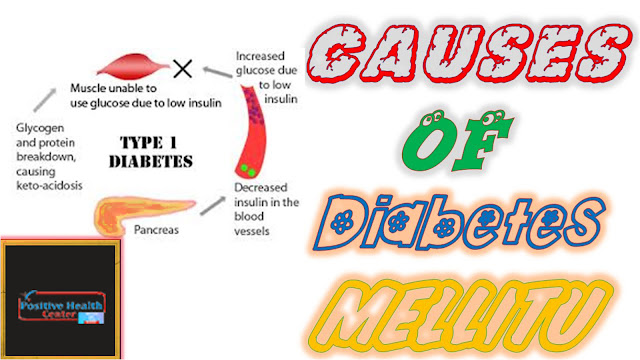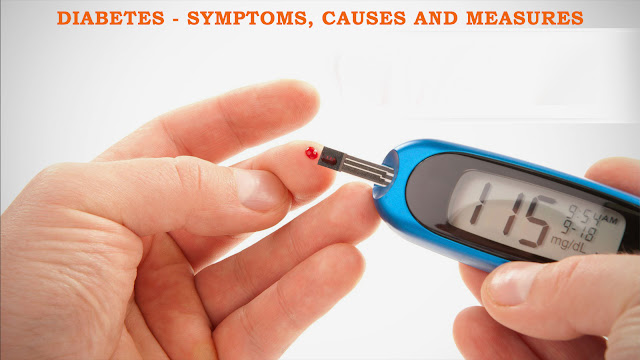Overview
Three factors are considered as a free ticket right into the heart of diabetes mellitus type 2: Obesity, lack of exercise and the preference for a carbohydrate-rich diet. Conversely, normal weight, physical activity, and a healthy diet will cure Type 2 diabetes - provided they are timely. By contrast, type 1 diabetes is more like a stroke of fate that - once broken - seems to be relatively immune to external influences. But even with type 1 diabetes, a healthy lifestyle can strengthen the organism so that the risk of consequential damage is reduced.Diabetes - a worldwide "pandemic"
Diabetes mellitus has now become a real mass illness. It affects almost 10 percent of the German population. Of these, 95 percent suffer from type 2 diabetes and 5 percent from type 1 diabetes.Ignoring diabetes, type 2 diabetes can lead to long-term severe health problems and type 1 diabetes in the short term to death.
Diabetic patients are dependent on medication for their entire lives - yet often suffer from the secondary effects of diabetes. While type 1 diabetes may only protect against meaningful prophylaxis, type 2 diabetics have every chance of complete cure - if they are willing to change their way of life and diet.
Type 1 Diabetes
Type 1 diabetes usually begins in adolescence but may develop later. Type 1 diabetics have an absolute lack of insulin because their pancreas produces less and less insulin.Type 1 diabetes is insulin-dependent until the end of life of the patient.
Insulin is needed for the transport of blood sugar (glucose) from the blood into the cells. Insulin - in the truest sense of the word - has a key function. Insulin causes the body's cells to open their membrane for glucose.
If insulin is missing, the cells remain closed. They do not let the glucose enter.
However, as cells require glucose as a raw material for energy production, they now also suffer from a lack of energy due to the lack of glucose. At the same time, however, more and more glucose is accumulating in the blood. The blood sugar level rises.
Type 1 Diabetes: The consequences
If glucose as a source of energy for the body cells fails, the body's own fats and proteins are degraded instead and used for energy. If fat and protein degradation remains within limits (as may be the case for healthy people in short-term starvation or high-intensity periods), then that's not going to be tragic.
In an absolute insulin deficiency, however, there is an almost unrestrained fat loss. Insulin has not only the task to bring glucose into the body cells. Insulin also plays a key role in lipid metabolism by activating the build-up of fatty acids from excess glucose, promoting the absorption of fats into the fat cells and preventing any fat loss.
If insulin is missing, then the opposite happens. Fat is broken down - and in such quantities that it comes to increased deposits on the blood vessel walls. Circulatory disorders and arteriosclerosis are the consequences. The risk of stroke and heart attack increases.
Type 1 Diabetes: The Symptoms
Typical symptoms of Type 1 diabetes include severe thirst, urinary frequency, fatigue, blurred vision, and sudden weight loss. In the air, you can smell something reminiscent of nail polish remover or rotting fruit.It is the ketone body acetone, which arises when in the organism - due to the glucose bottleneck in the cells - increasingly body fat is converted into energy.
In addition, acetone (together with other ketone bodies) can lead to acidification of the blood. This acidosis (acidosis) can lead to loss of consciousness, a life-threatening state of shock known as "diabetic coma".
Type 1 Diabetes: The Causes
In the course of this autoimmune process, the insulin-producing cells in the pancreas are destroyed by the body's own immune cells, since the latter believe that the insulin-producing cells are pathogens that have to be eliminated.
However, to blame the genes for the disease alone has proved to be nonsensical, because one can discover the corresponding genetic feature not only in type 1 diabetics but also in completely healthy people.
Consequently, genetics is only one factor in the development of type 1 diabetes. However, the key trigger must be different.
 |
| Type 1 Diabetes |
Type 1 diabetes: Possible triggers
As a spark for type 1 diabetes, for example, previous viral diseases are considered. These should be able to lead to the above-mentioned incorrect programming of the immune system so that the defense cells of the immune system now attack their own insulin-producing cells (= beta cells) in the pancreas.
The reason why the immune system attacks the beta cells and not other cells in the organism becomes clear from the highly interesting hypothesis described below. This hypothesis could explain not only the development of type 1 diabetes but also the development of many other autoimmune diseases and also many allergies
The leaky gut syndrome
In the intestine, some people have a so-called leaky gut syndrome. "Leaky Gut" means in German as much as "licking", ie "leaky gut". This means that the intestinal mucous membrane, which normally only selectively releases nutrients and nutrients into the bloodstream, has suddenly become permeable to substances that have no place in the bloodstream.A permeable intestinal mucosa may result from an inappropriate diet, infection, antibiotic treatment, radiotherapy, or other irritating effects. The result is that even incompletely digested particles can now enter the bloodstream, including undigested proteins (instead of just single amino acids), such as B. Milcheiweisse.
However, the body classifies foreign proteins as invaders. After all, even viruses are foreign proteins and he must fight mercilessly, otherwise, it can cost him his life.
As a precaution, it, therefore, forms antibodies against the new foreign proteins or against a specific amino acid sequence in these proteins and fights them.
Suppose a cow's milk protein had entered the bloodstream and led to the formation of antibodies. These antibodies now swirl through the whole organism and check every angle, whether themselves.
Milk and cereals: risk factors for type 1 diabetes
Cow's milk is therefore regarded as a possible risk factor or even as a trigger for type 1 diabetes - especially when babies under 18 months are fed cow's milk. However, not only can milk eggs be regarded as foreign algae, but also wheat gluten (gluten).
This is why it is often advised against baby meals containing gluten-containing cereals (wheat, rye, barley, oats, spelled).
In order to minimize the risk that one's own child might develop type 1 diabetes at some point, babies should, therefore, receive no cow's milk products or gluten-containing cereal products in the first year of life, better still longer, and be breastfed for as long as possible.
A healthy colon prevents type 1 diabetes
The above thesis would also explain the fact why type 1 diabetes often appears after viral diseases. In this case, the antibodies of the immune system confuse the amino acid sequence of the virus which caused the previous disease (eg mumps or the like) with an amino acid sequence in the insulin-producing cells in the islets of Langerhans. As a result, a healthy diet that leads to full intestinal health is a prerequisite for diabetes type 1 having no chance.
Diabetes Symptoms Causes and Measures
 Reviewed by sajid
on
Friday, November 17, 2017
Rating:
Reviewed by sajid
on
Friday, November 17, 2017
Rating:
 Reviewed by sajid
on
Friday, November 17, 2017
Rating:
Reviewed by sajid
on
Friday, November 17, 2017
Rating:








No comments: